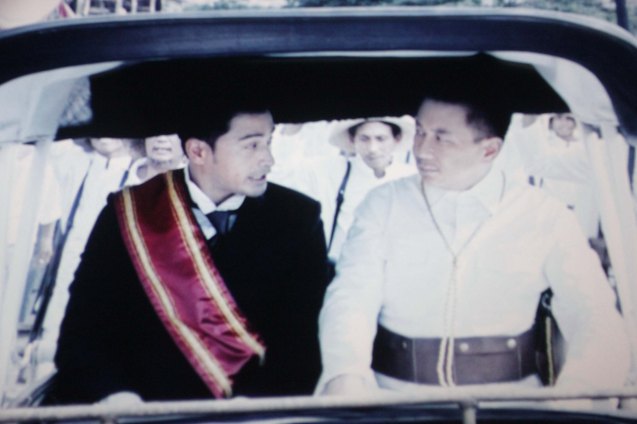
from right Jeorge E.R. Estregan (Emilio Aguinaldo) and Cesar Montano (Andres Bonifacio) during better times. Photo is from MMFF award winning film EL PRESIDENTE.
Written by
Jude Bautista
Perhaps no other Filipino hero’s death is more shrouded in controversy and mystery than Andres Bonifacio’s. At the very least Ninoy Aquino had journalists behind him before he was assassinated. There’s audio and video recording until the moment. Historians trying to investigate Andres Bonifacio’s death and ‘execution’ have nothing to go on except court records of his supposed trial and questionable second hand accounts.
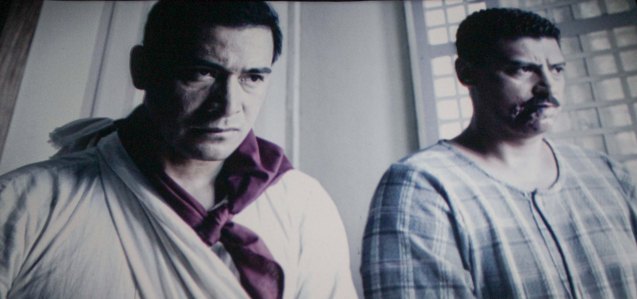
Cesar Montano (Andres Bonifacio) and Joko Diaz (Procopio Bonifacio) during their trial. Photo is from MMFF award winning film EL PRESIDENTE.
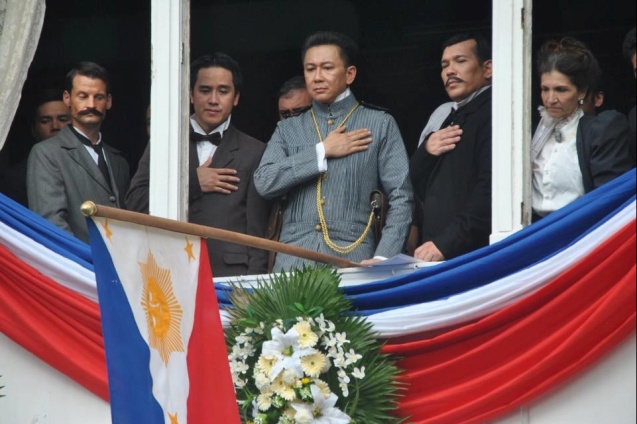
Jeorge E.R. Estregan (Emilio Aguinaldo) during the declaration of Phil. independence. Photo is from MMFF award winning film EL PRESIDENTE.
The biopic EL PRESIDENTE by Mark Meilly on the life of Emilio Aguinaldo (Jeorge E.R. Estregan) depicts that very important part of Philippine history and offers an insight on how it happened. Especially since, Aguinaldo as the first Phil President had to be part of the decision not just to arrest but also to execute Andres Bonifacio (Cesar Montano). To fully understand this you have to see the context of what happened and the reasons that led to it. This is where EL PRESIDENTE sheds some new important facts that are not generally known by the public.
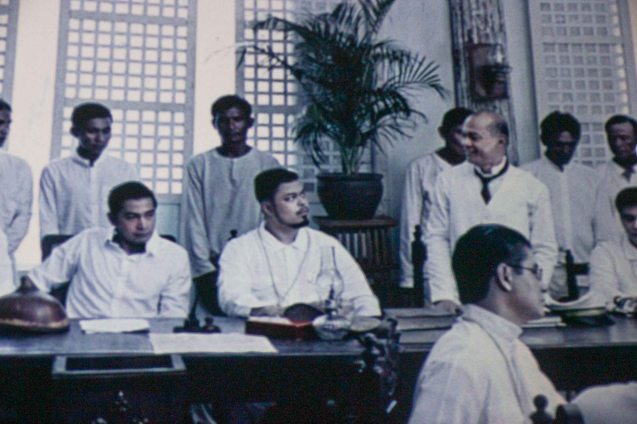
Jess Evardone (Severino Delas Alas) makes a speech during the Tejeros Convention. He is one of many critically acclaimed actors who were part of the historical epic. Photo is from MMFF award winning film EL PRESIDENTE.
The film itself begins with Aguinaldo joining the ranks of the Katipunan with no less than Bonifacio performing the sacred tests and ritual. Bonifacio founded the Kagalang-galang Kataastaasang Katipunan-K.K.K (Highest and Most Honorable Society of the Children of the Nation). According to Wikipedia Teodoro Plata and Ladislao Diwa co founded the Katipunan. But Bonifacio undoubtedly was the moving force and face of the secret organization whose goal is to establish an independent and free Filipino nation. It is this concept that distinguishes him from Dr. Jose Rizal who favored peaceful reform under Spanish rule.
The crucial role of Bonifacio and the performance earned the Best Supporting actor Award for Cesar Montano during the Metro Manila film fest awards night. The film won a total of 7 awards: 2nd Best Picture, Best Make-up: Warren Munar, Best Theme Song: Apl D’Ap and Jamir Garcia of Slapshock, Best Musical Score: Jessie Lasaten , Best Sound: Albert Michael Idioma, Youth Choice Award and Best Float.

Kids welcome soldiers hoping to see Filipino troops, the Americans arrive instead. Photo is from MMFF award winning film EL PRESIDENTE.
In the history of countries finding their own identity and establishing independence from foreign powers the father of the revolutions are usually the national hero. One example is George Washington of the United States considered as the “Father of his Country”. Using this theorem Bonifacio as father of the revolution should be the National Hero not Dr. Jose Rizal. Bonifacio seems to be the figure either overlooked or de-emphasized in spite of his real importance in the struggle and creation of the Filipino nation.
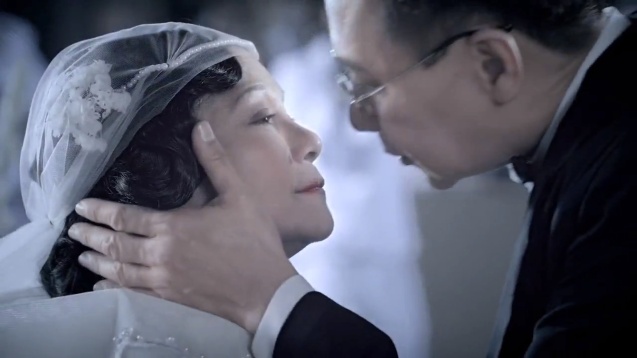
Jeorge E.R. Estregan (Emilio Aguinaldo) marries Nora Aunor (Maria Agoncillo) his 2nd wife. Photo is from MMFF award winning film EL PRESIDENTE.
EL PRESIDENTE is one of the newer films to look into the details of how and why; conflict arose between Bonifacio and the revolutionary government, which he was supposed to lead. Another film produced recently, ANG PAGLILITIS NI ANDRES BONIFACIO (The Trial of Andres Bonifacio) by Mario O’Hara was a part of the Cinemalaya Film festival in 2010. O’Hara’s approach was more about the personal details of the hero’s life rather than WHY he was arrested in the first place.
GMA Network will also air an 8-part docu drama on Andres Bonifacio entitled KATIPUNAN with Sid Lucero as lead star this year. The series was produced as part of the 150th anniversary of the hero’s birth known as the Supremo. Incidentally, Lucero also has a role in EL PRESIDENTE as Gaudioso. Ronnie Lazaro plays Gen. Candido Triano Tirona who has been with Emilio since childhood.
Another period piece this time a TV series entitled INDIO is also from GMA network stars Bong Revilla, Jennylyn Mercado, Rhian Ramos, Agot Isidro and many more. The character revolves around a Filipino child adopted by Spanish conquistadors more than a hundred years earlier than the time of Aguinaldo and Bonifacio.
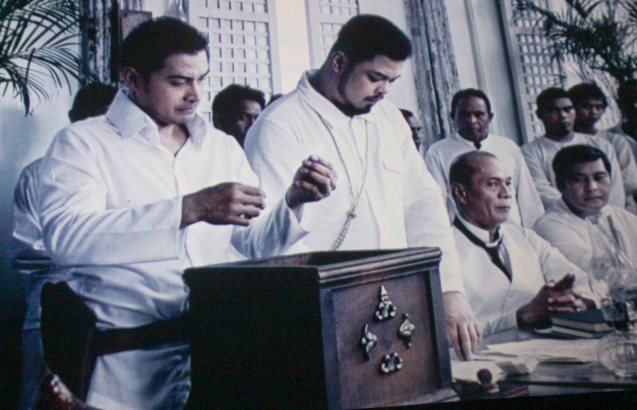
Cesar Montano (Andres Bonifacio) painfully reads election results that may have been fraudulent. Photo is from MMFF award winning film EL PRESIDENTE.
Early and almost throughout EL PRESIDENTE Aguinaldo concedes that Andres Bonifacio should be and IS the leader of the Revolutionary movement as the Supremo of the Katipunan. This was made clear when Clemente Jose Zulueta (Epy Quizon) a revolutionary journalist informed the rebel leadership of possible Spanish concessions. Aguinaldo had taken some ground in Cavite and the Spanish wanted to negotiate a peace treaty with the rebels conceding to some reform including sending abusive monks back home. Aguinaldo refused to negotiate saying he was not authorized to do so and the Supremo was the true leader of the revolution.
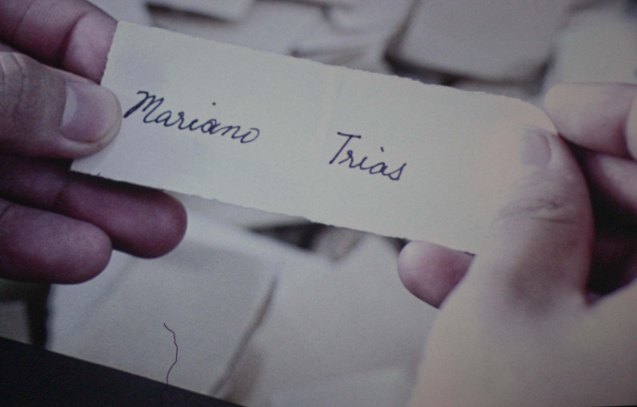
Cesar Montano (Andres Bonifacio) reads Mariano Trias ballot during the Tejeros Convention. Photo is from MMFF award winning film EL PRESIDENTE.
The Tejeros Convention
The Tejeros Convention in San Francisco De Malabon, Cavite in March 22, 1897 was supposed to be a meeting of strategy to defend the province against Spanish forces. Even within the Katipunan there were two groups. Manila, Tondo to be specific, was the base of the Magdiwang party under Bonifacio. His forces had to flee to Cavite after being driven out of Manila. The Magdalo party is Aguinaldo’s and was in their home turf in Cavite. An impromptu election had been requested to ‘formalize’ the leadership of Bonifacio.
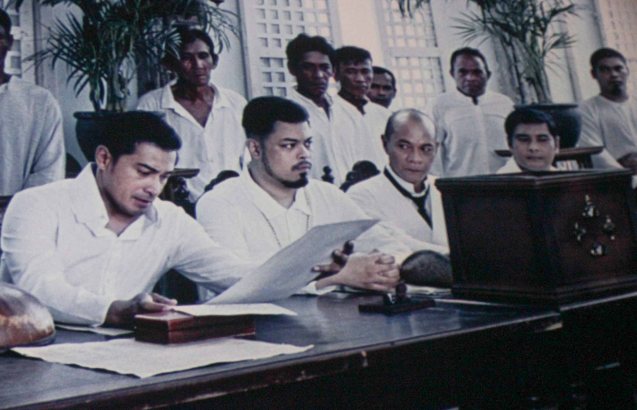
Cesar Montano (Andres Bonifacio) got the Ministro del interior post as Consuelo de bobo. Photo is from MMFF award winning film EL PRESIDENTE.
The film basically exonerates Aguinaldo of conspiring to wrest leadership through the election, which he won by landslide in absentia. It shows that Aguinaldo was off in an important battle and other members of the Magdalo group were with him fighting in Salitran, Dasmariñas Cavite. At the same time the film also made clear that there was a real conspiracy among the elite members or the illustrados to shut Bonifacio out of the very organization that he founded.
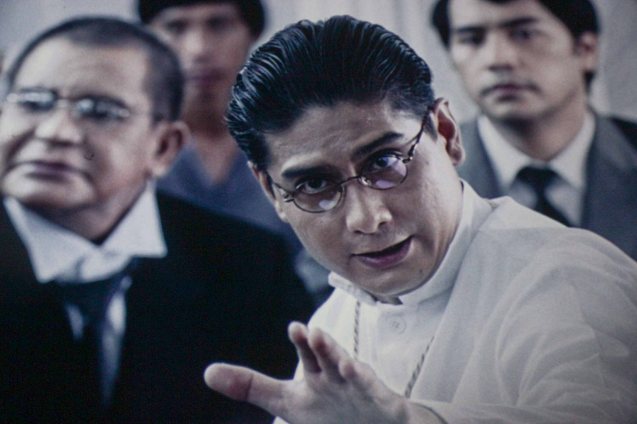
Don Umali (Daniel Tirona) questions the credentials of Cesar Montano (Andres Bonifacio) even for the consuelo de bobo post of Ministro del interior. Photo is from MMFF award winning film EL PRESIDENTE.
Andres came from the masses, taught himself how to read and was not educated unlike the landed gentry of which Aguinaldo and the later members of the Katipunan were part of. These were the mestizos or half-breeds (half Spanish and Filipinos) who could not accept the leadership of an indio (Spanish term for brown skinned native). There’s a class struggle within the Phil. revolutionary movement. This was also demonstrated in another controversial death, that of General Antonio Luna (Christopher De Leon) who was another illustrado. The Tejeros convention was the turning point for Bonifacio that created a split, which could not be repaired.

Cesar Montano (Andres Bonifacio) was antagonized by Don Umali’s (Daniel Tirona) suggestion. Photo is from MMFF award winning film EL PRESIDENTE.
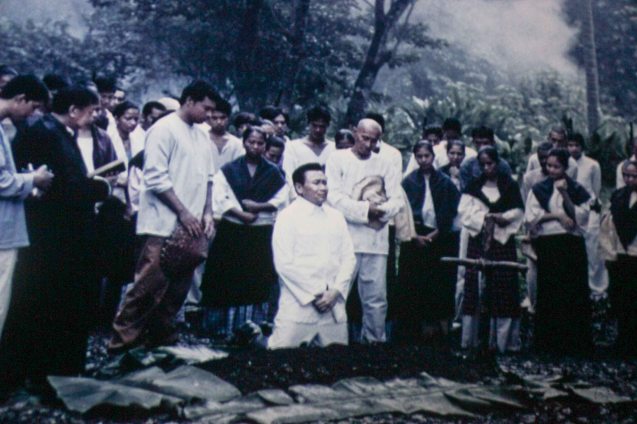
Jeorge E.R. Estregan (Emilio Aguinaldo) kneels on grave of close ally. Photo is from MMFF award winning film EL PRESIDENTE.
Courage and Conviction
Aguinaldo had no choice but to honor the Tejeros election that made him the leader of the revolution. Bonifacio in his mind had no choice but to wrest back the leadership that was stolen from him by the elite conspiracy, which led to his arrest and execution. The class struggle then, still pervades to this very day more than a hundred years later. So this was the path that led to the inevitable conflict between the two great men. Although Aguinaldo until the very end did not want to execute the Supremo out of respect and gratitude for everything that he has done.
What cannot be questioned is the courage and conviction the two founding fathers displayed throughout their lives. Both men sacrificed so much of themselves and bravely overcame tremendous odds for the country and freedoms we have today as Filipinos.




